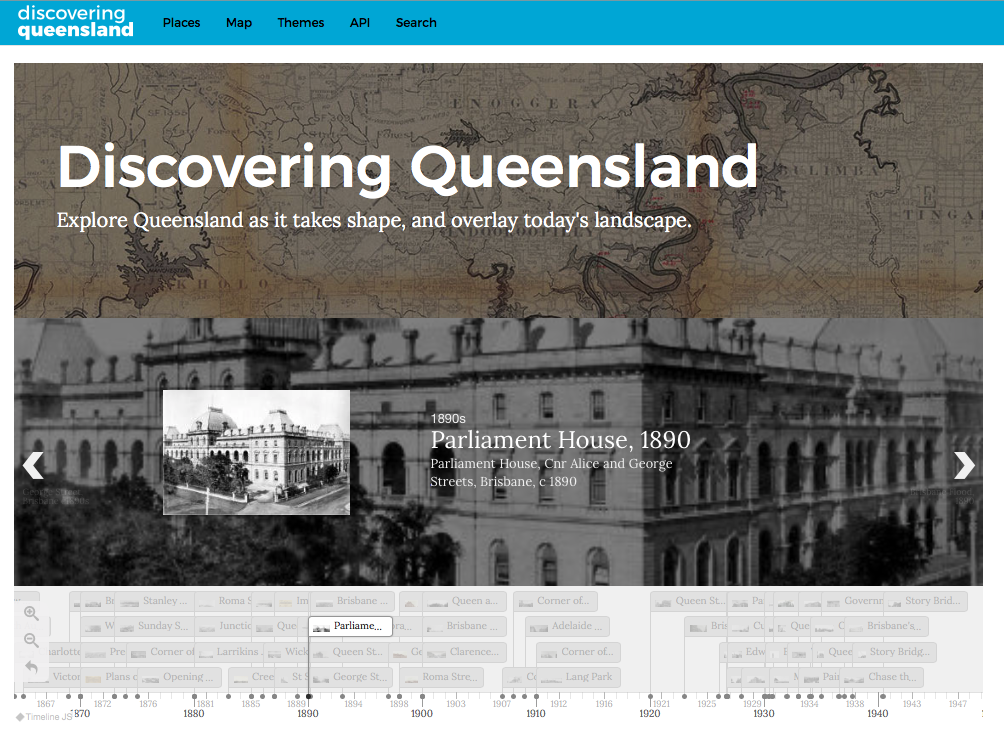Earlier this year Gaia Resources applied to join the Testing Within Government (TWiG program) as part of Advance Queensland. With our growing Brisbane office and our experience in the GLAM (Gallery, Library, Archive and Museum) sector, the chance to partner with the Queensland State Archives and apply some of our products and services seemed a perfect fit.
The TWiG program works by government surfacing business problems, and the SME tech sector suggesting innovative products that could help solve those problems. This is time-boxed into a 12-week program running over the winter months, with a public showcase in September 2017. One of the issues proposed in the 2017 rounds was how to best explore digital collections, which we are happy to announce we were successful in winning.
In recent years there have been a number of approaches to place collections online and invite engagement with those collections. Notably, this includes services like Trove, Victorian Collections, eHive and many, many more. Indeed, Gaia Resources has been contracted by organisations across Victoria, WA, SA and Tasmania to help surface their collections through products such as online collection databases (e.g. RWAHS) and specialist web applications (e.g. WAMinals). Nevertheless, getting collections online, and getting the public to interact and re-use these resources remains a conundrum for many GLAM institutions.
Recently, we’ve been refining our approach to collections management by moving towards re-usable products based on open source packages, and creating fewer bespoke service based solutions in the collections space. This is evidenced with us favouring the use of CollectiveAccess and AtoM for collections management, and using frameworks like Drupal and Knockout SPAs for website delivery.
The TWiG program allows us to take this one step further by packaging some of these approaches into a reusable Drupal distros package, but looking at the unique needs of the collecting institutions (in this case the Queensland State Archives), and allowing enough flexibility for the institutions to change the presentation of data around their data schemas. In this case, the focused collection material was on archival photographs, so the focus of the additional customisation was to ensure a high level of mapping precision and to present modern Google Street View photographs to be juxtaposed with the archival photos to show a “now and then” of the photos and give some historical context.
So that gives a background on the program, the content, and the business problem…
What follows is 12 weeks, broken into 6 x 2 week sprints with a new product functionality and controlled public release every 14 days. It’s fast, furious, but really enjoyable to put together something so quickly in a sector that is traditionally not particularly fast to deliver public releases. We’re now at the end of Sprint 4, which places us a bit past the halfway mark. With four controlled public releases, four rounds of feedback, and four iterations on the product, it is absolutely one of the fastest developed projects I’ve worked on.
We’ve now got a decent spread of data with around 80 photos in the system (and another 20 ready to be ingested) spread over south-east Queensland. We’ve also covered the period 1830 – 1990, so using the resource really allows you to see how South-East Queensland has evolved over the last almost 200 years since European settlement. Especially when the same vantage point, such as Victoria Bridge, can be revisited at 1880, 1900, 1940 and 2017 (spoiler alert the bridge keeps getting washed away in floods and there’s lot more buildings in each view).
A snapshot of the front end, showing historical photos and the time sliders
The application continues to evolve with the TWiG program, and in the process our offering of products and services to mobilise collection data improves. Stay tuned for the end of the program when I take you through a detailed look of the product and how it evolved over time.
For more information, contact me directly in our Brisbane office on (07) 3063 0418, email, or chat with us on Facebook, Twitter or LinkedIn.
Morgan


Comments are closed.